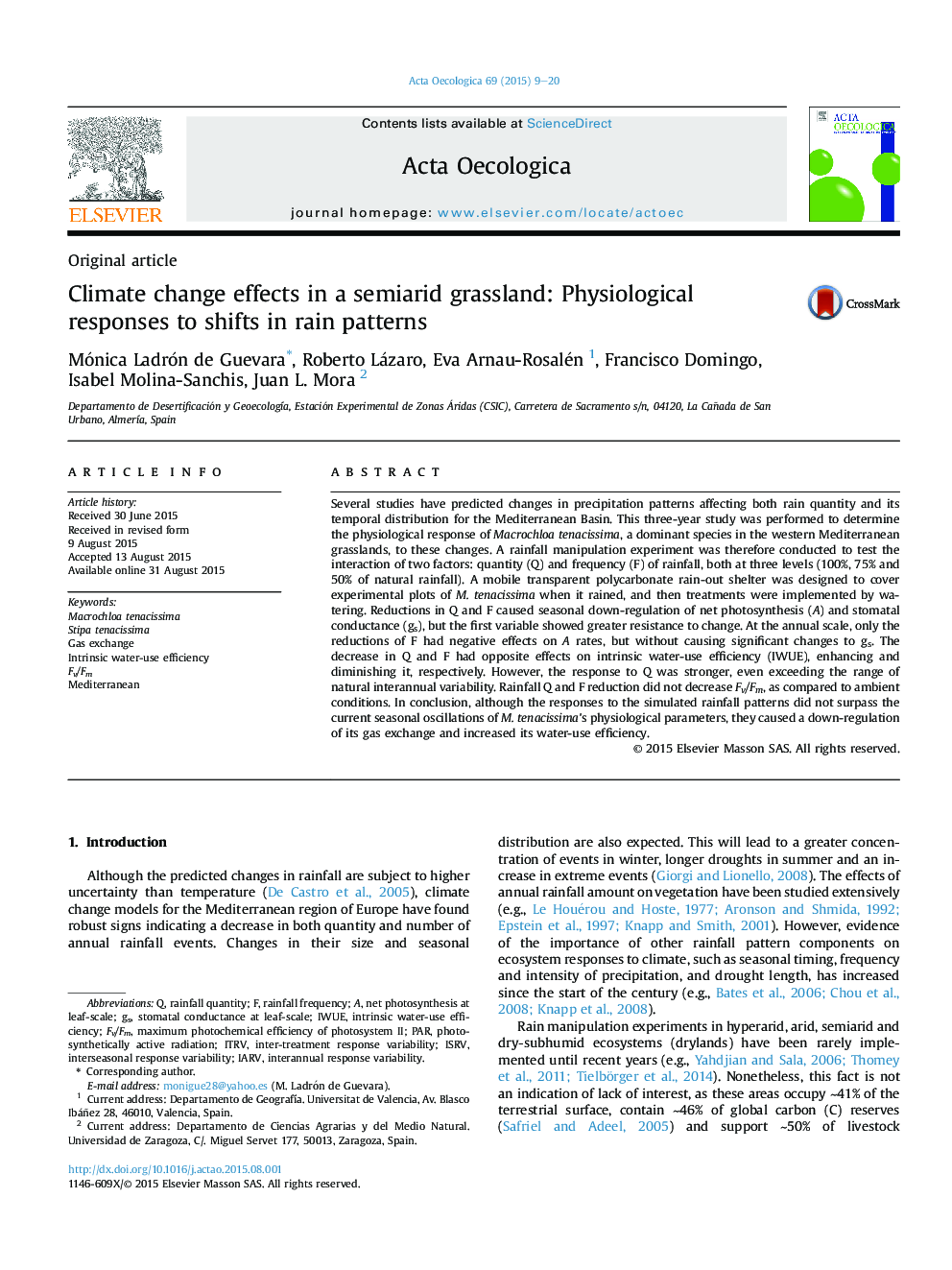| Article ID | Journal | Published Year | Pages | File Type |
|---|---|---|---|---|
| 4380637 | Acta Oecologica | 2015 | 12 Pages |
•M. tenacissima used a water control strategy as response to rainfall shifts.•Rain frequency played a more important role than rain amount in gas exchange shifts.•IWUE increased with the reduction in rain amount, but decreased with its frequency.•Fv/Fm was not adversely affected by shifts when it was compared to ambient treatment.•The main driver of gas exchange for this species was the marked climate seasonality.
Several studies have predicted changes in precipitation patterns affecting both rain quantity and its temporal distribution for the Mediterranean Basin. This three-year study was performed to determine the physiological response of Macrochloa tenacissima, a dominant species in the western Mediterranean grasslands, to these changes. A rainfall manipulation experiment was therefore conducted to test the interaction of two factors: quantity (Q) and frequency (F) of rainfall, both at three levels (100%, 75% and 50% of natural rainfall). A mobile transparent polycarbonate rain-out shelter was designed to cover experimental plots of M. tenacissima when it rained, and then treatments were implemented by watering. Reductions in Q and F caused seasonal down-regulation of net photosynthesis (A) and stomatal conductance (gs), but the first variable showed greater resistance to change. At the annual scale, only the reductions of F had negative effects on A rates, but without causing significant changes to gs. The decrease in Q and F had opposite effects on intrinsic water-use efficiency (IWUE), enhancing and diminishing it, respectively. However, the response to Q was stronger, even exceeding the range of natural interannual variability. Rainfall Q and F reduction did not decrease Fv/Fm, as compared to ambient conditions. In conclusion, although the responses to the simulated rainfall patterns did not surpass the current seasonal oscillations of M. tenacissima's physiological parameters, they caused a down-regulation of its gas exchange and increased its water-use efficiency.
